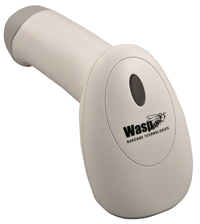Wasp Launches Medicine Tracking System
 PLANO, Texas — Barcodes have been used for inventory management for years, a function that has been utilized on building sites to organize and track materials throughout the construction process. Now, Wasp Barcode Technologies, based in Plano, Texas, is introducing a line of health care products intended to be used in completed hospitals to help organize distribution of various items and provide accountability and cut down on human error in administration of medications.
PLANO, Texas — Barcodes have been used for inventory management for years, a function that has been utilized on building sites to organize and track materials throughout the construction process. Now, Wasp Barcode Technologies, based in Plano, Texas, is introducing a line of health care products intended to be used in completed hospitals to help organize distribution of various items and provide accountability and cut down on human error in administration of medications.
Cliff Anderson, product marketing manager for Wasp, explained the company recently introduced a barcode scanner with an antimicrobial housing and alcohol-resistant surface, allowing hospital employees to use the devices in a healthcare environment.
Anderson explained the alcohol-resistant surface would allow clinicians to constantly clean the devices without causing the system to malfunction or break down at an unreasonable rate.
He added that, “it’s got a special kind of plastic that’s antimicrobial, things like funguses can’t grow on the surface because of the way it’s constructed. It’s a very non-porous type of material.”
Anderson said the product could be used to organize and track various materials but the main use hospitals seemed interested in was to get a better handle on how medications flow throughout the hospital. One focus of this effort is the elimination of errors in administering medication to patients.
“You want to be able to scan their patient ID wristband to make sure that you’ve got the right patient,” Anderson explained. “Then you want to scan the medication to make sure the medication you’re scanning is what the doctor actually ordered, there are no allergies — that sort of thing. You also want to scan the person administering the medicine, scan their badge so that you know who administered the medication.”
Anderson explained hospitals could use his company’s software to develop systems of organization for medication, categorizing them by the type of medication, listing where they came from, and giving each individual vial its own identification number. The hospital sets up a system of organization and then prints barcodes to attach to individual items. This allows hospitals to get a better picture of where a problem may have originated when medication is given to the wrong person or there appears to be a defect in the medication itself. Wasp also offers a wristband printer, allowing clinicians to double check allergies and other information related to their patient.
Hospital administrators that want to get a better handle on lost materials or prevent more nefarious acts, which are becoming common in the world of prescription medication abuse, can place scanners at various stations to track the movement of medications throughout their facility.
Anderson said scanners could be employed so that employees at a hospital’s pharmacy get their badges scanned when they release information to a courier. The courier gets scanned at that point and upon delivering the medication to a nurse’s station. The employees at the nurse’s station get scanned as they accept the medication and the individual clinician gets scanned when he or she takes the medications to administer to patients. Anderson said this would allow the hospital to track any situations where a medication gets lost and discover which individual scanners and badges were involved in the process.
